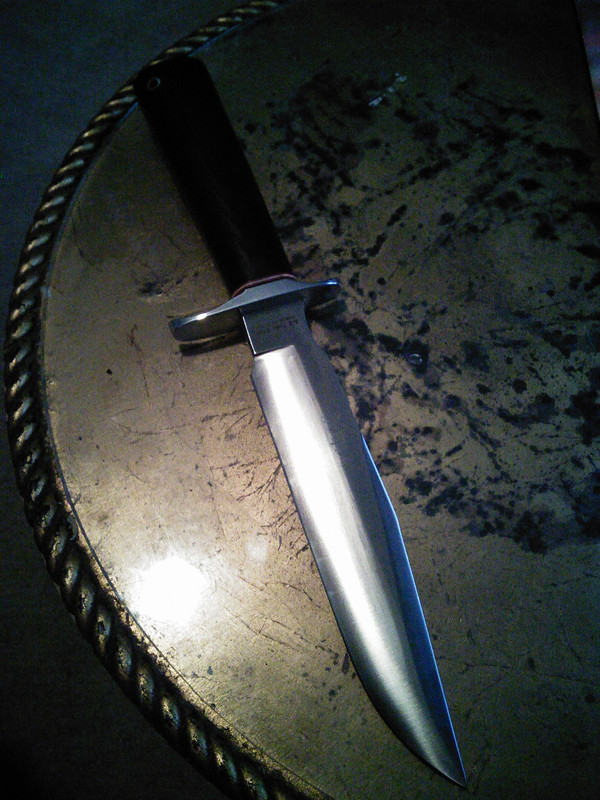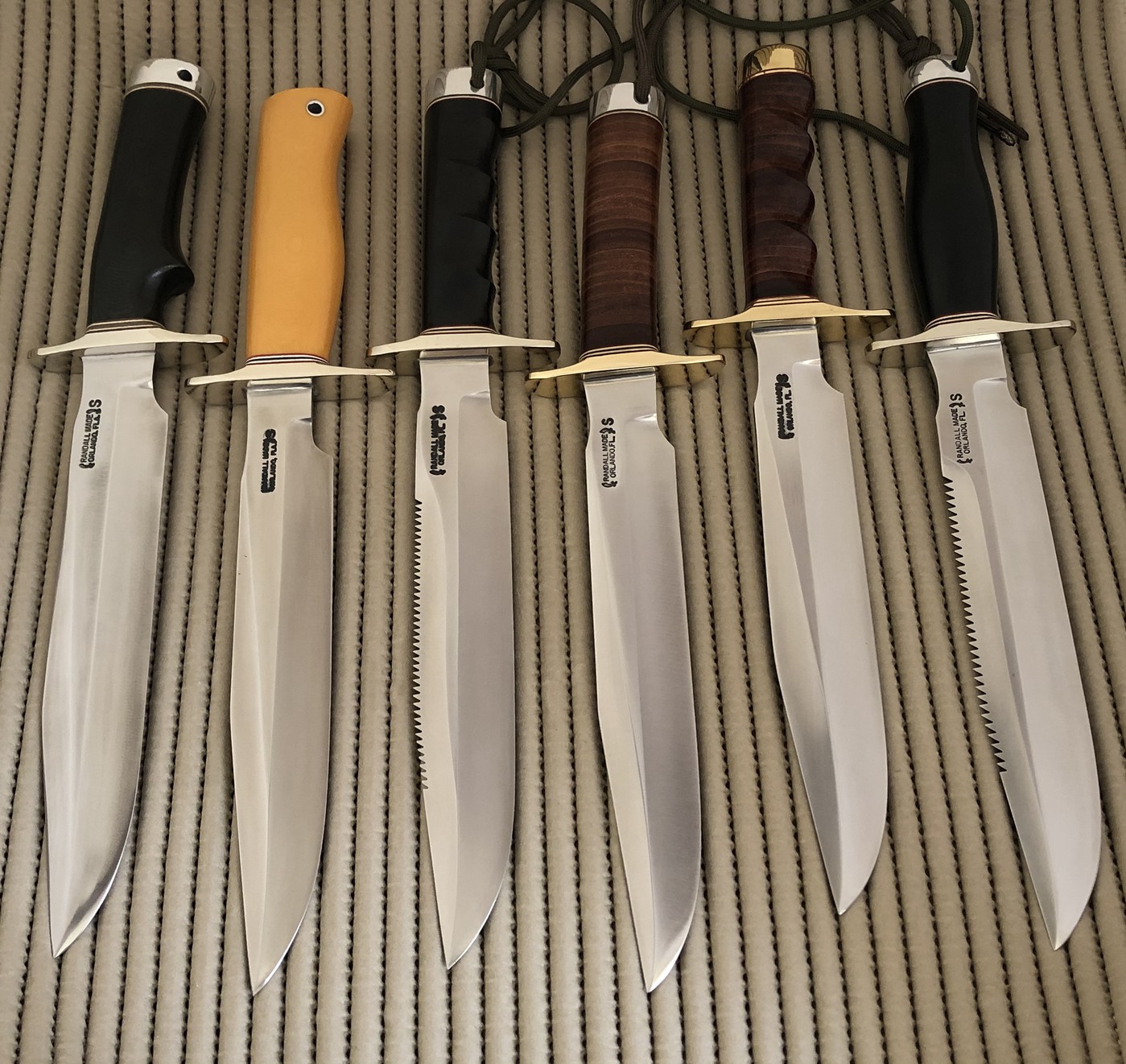Murindo: I am fortunate enough to own 3 Randall’s: a SS Model18, 5.5”; A Model 14 , 7.5” SS standard blade, black micarta, finger groove handle. ( Mine abrades the skin on my forefinger by rubbing against the guard,. Go figure? It’s a Safe Queen anyway.) ; and finally, a Model 1-16 SP Border Patrol Model, with the green micarta and full tang, exposed on top, standard 7” and SS Blade. This is undoubtedly the knife I would choose for utility, fighting & defense. It’s balance , blade length, thickness & configuration are superb. It’s ease/speed of maneuver, in my hand, exceeds that of any other large knife that I have ever handled.
I’d choose the Model 18 only for it’s designed use as a survival / extraction, sharpened pry -bar. The handle/ guard-heavy balance makes it a bit “off” for any other uses. I’ve never handled the 18 in the optional 7.5 “ bladed version. It coukld be better balanced in that configuration? Albeit , it would be a bit long for its intended use in a caved -in/ crashed helicopter cockpit.
As to blade length among 6”, 7”and 8” lengths, IMO, after 6” it is just personal preference and the blade’s balance in YOUR hand. 6” is the accepted length for a killing knife in a combat environment. That standard was established by Finnish “ commandos” in WWII. Their native Puukkho knives were traditionally 6” in blade length. They were found to be long enough to penetrate the heavy woolen winter greatcoat of the Russsian Soldiers, from a rear attack, reach the kidney or liver and exact a silent, one stab kill, when twisted on the way out. Strange that Randall traditionally makes the model 18 with a 5.5” blade, not 6’. But the knife was designed to be an improvement of the standard issue Army & Air Force Ontario Pilot knife, with a 5.5” blade. it was originally made for self rescue from a crashed helicopter cockpit, in the jungles of Indochina,. No greatcoats to contend with in that enviorment.



